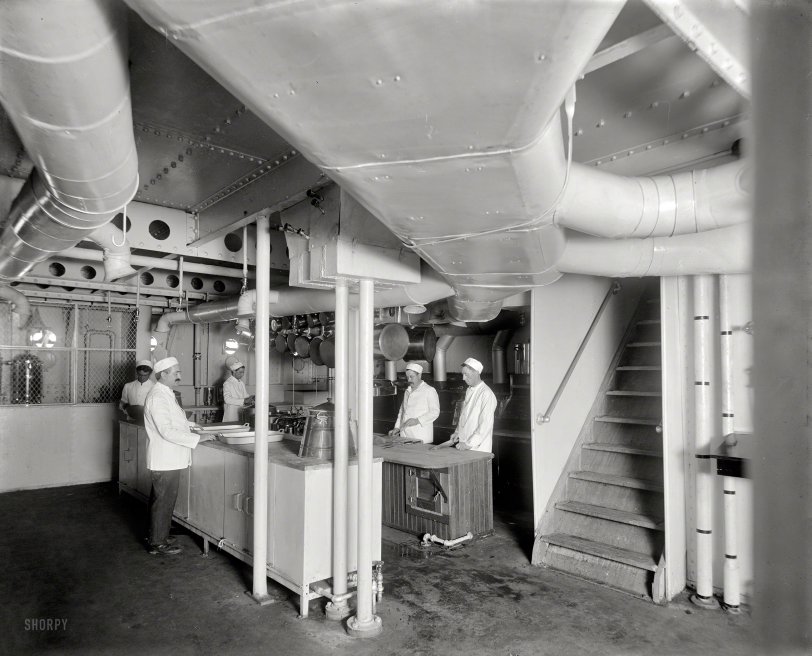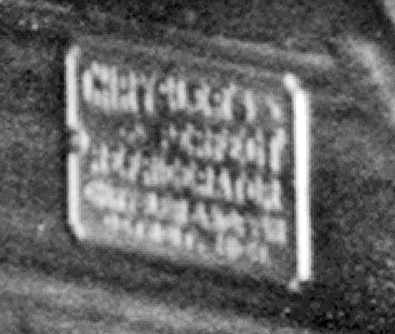


Framed or unframed, desk size to sofa size, printed by us in Arizona and Alabama since 2007. Explore now.
Shorpy is funded by you. Patreon contributors get an ad-free experience.
Learn more.

- Baldwin 62303
- Baldwin VO-1000
- Cold
- No expense spared
- Tough Guys
- Lost in Toyland
- And without gloves
- If I were a blindfolded time traveler
- Smoke Consumer Also Cooks
- Oh that stove!
- Possibly still there?
- What?!?
- $100 Reward
- Freeze Frame
- Texas Flyer wanted
- Just a Year Too Soon
- WWII -- Replacing men with women at the railroad crossing.
- Yes, Icing
- You kids drive me nuts!
- NOT An Easy Job
- I wonder
- Just add window boxes
- Icing Platform?
- Indiana Harbor Belt abides
- Freezing haze
- Corrections (for those who care)
- C&NW at Nelson
- Fallen Flags
- A dangerous job made worse
- Water Stop
Print Emporium
Duct Soup: 1908

Circa 1908. "The galley. Steamer City of Cleveland, Detroit & Cleveland Navigation Co." 8x10 inch glass negative, Detroit Publishing Co. View full size.
It Took Some Time to Sink In
After a week had passed, the galley crew finally realized that no matter how stolidly they worked, they were never going to be given any actual food to prepare.
Coveting the cookware
I'll bet if you could find those pots and pans, they would still have plenty of use in them! I'd love to know what they used that huge, well designed, copper kettle for!
Animatronics
If you can find the slot for your token, they will all spring into action.
Ice
The small door at the rear of the butchers table appears to be for ice input. Got to keep the Buffalo steaks, or Detroit sausages, or whatever cold.
[Close-up. -tterrace]

Scrapped in 1956
Click here for a short article and photo about the City of Cleveland III from the website of the Marine Historical Society of Detroit.
Crowd poison
This ship's ventilation system may be oversized by modern standards. In the mid-19th century, carbon dioxide was proven non-toxic to humans, but experts remained wedded to the idea that we were exhaling some unknown toxin which made rooms with large numbers of people dangerous or unhealthful. This led to code requirements of 30 cfm per person of outside air, a staggering requirement by today's standards, making heating and cooling inefficient.
I don't know if these practices made their way into marine engineering, but I presume they did. In any case, a galley would have different requirements.
The "crowd poison" theory increasingly fell from favor after 1911, according to Chapter Three of Air Conditioning America by Gail Cooper.
Dave is . . .
KING OF THE KAPTIONS - sometimes I can be a bit obtuse, but I did manage to get this one.
























On Shorpy:
Today’s Top 5